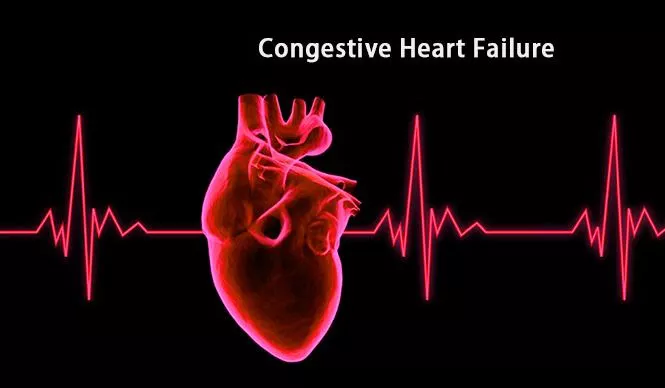Systolic heart failure, also known as heart failure with reduced ejection fraction (HFrEF), is a serious condition that affects the heart’s ability to pump blood effectively. This condition primarily involves the left ventricle, the heart’s main pumping chamber, which becomes weakened and unable to contract adequately. As a result, the heart does not eject enough blood into the circulation, leading to various symptoms and complications.
Understanding systolic heart failure is crucial for both patients and healthcare providers. Early recognition and management can significantly improve outcomes and quality of life for those affected.
What Is Systolic Heart Failure?
Systolic heart failure occurs when the left ventricle cannot contract effectively during each heartbeat. The ejection fraction (EF), which measures the percentage of blood pumped out of the ventricle with each contraction, is a critical indicator in diagnosing this condition. A normal EF ranges from 55% to 70%, while an EF below 40% typically indicates systolic heart failure.
Key Features of Systolic Heart Failure
The hallmark feature of systolic heart failure is a reduced ejection fraction. This reduction signifies that the heart muscle has become weakened or damaged, often due to conditions such as coronary artery disease, hypertension, or previous myocardial infarction (heart attack).
Symptoms of Systolic Heart Failure
The symptoms of systolic heart failure can vary in severity but generally include:
Shortness of Breath: Patients often experience difficulty breathing during physical activity or even at rest as fluid accumulates in the lungs.
Fatigue: Persistent tiredness is common, even after adequate rest.
Swelling: Fluid retention may lead to swelling in the legs, ankles, and abdomen.
Coughing or Wheezing: A persistent cough that produces clear or pink-tinged mucus may occur due to fluid buildup in the lungs.
Orthopnea: Difficulty breathing while lying flat may necessitate sleeping with multiple pillows.
Paroxysmal Nocturnal Dyspnea: Sudden nighttime breathlessness can awaken patients from sleep.
These symptoms often develop gradually but can worsen over time if left untreated.
Causes of Systolic Heart Failure
Several underlying conditions can lead to systolic heart failure:
Coronary Artery Disease (CAD): This condition narrows or blocks coronary arteries, reducing blood flow to the heart muscle.
Hypertension: Chronic high blood pressure forces the heart to work harder, eventually leading to ventricular hypertrophy and dysfunction.
Myocardial Infarction: Damage from a previous heart attack can weaken the heart muscle.
Cardiomyopathy: This refers to diseases of the heart muscle that can be caused by genetic factors, alcohol abuse, or infections.
Arrhythmias: Abnormal heart rhythms can impair effective pumping.
Valvular Heart Disease: Malfunctioning heart valves can disrupt normal blood flow and increase strain on the heart.
Recognizing these risk factors is essential for prevention and early intervention.
Diagnosis of Systolic Heart Failure
Diagnosing systolic heart failure involves a comprehensive evaluation that includes:
Medical History and Physical Examination: Healthcare providers assess symptoms and perform physical exams to check for signs such as swelling or abnormal lung sounds.
Echocardiogram: This imaging test evaluates heart structure and function, providing critical information about ejection fraction.
Electrocardiogram (EKG): An EKG records electrical activity in the heart and can identify arrhythmias or prior myocardial infarctions.
Blood Tests: These tests measure levels of natriuretic peptides (such as BNP), which are elevated in heart failure.
Chest X-ray: This imaging test helps visualize fluid accumulation in the lungs and assess heart size.
Treatment Options for Systolic Heart Failure
While there is no cure for systolic heart failure, various treatment options aim to manage symptoms and improve quality of life:
Lifestyle Modifications
Dietary Changes: A low-sodium diet helps reduce fluid retention.
Exercise: Regular physical activity under medical supervision can enhance cardiovascular health.
Weight Management: Maintaining a healthy weight reduces strain on the heart.
Medications
Several classes of medications are commonly prescribed:
ACE Inhibitors: These help relax blood vessels and lower blood pressure.
Beta Blockers: They reduce heart rate and workload on the heart.
Diuretics: These medications help eliminate excess fluid from the body.
Aldosterone Antagonists: They help prevent sodium retention and further fluid buildup.
Advanced Therapies
In more severe cases, advanced treatments may be necessary:
Implantable Devices: Devices like implantable cardioverter-defibrillators (ICDs) or cardiac resynchronization therapy (CRT) can help manage arrhythmias and improve coordination between ventricles.
Surgery: Surgical options may include valve repair/replacement or coronary artery bypass grafting (CABG).
Heart Transplantation: In end-stage cases where other treatments fail, a transplant may be considered.
Conclusion
Systolic heart failure represents a significant health concern affecting millions globally. Recognizing its signs—particularly reduced ejection fraction—is vital for timely diagnosis and intervention. Through lifestyle changes, medication management, and advanced therapies when necessary, individuals with this condition can achieve better health outcomes and improved quality of life.
Related topics:


